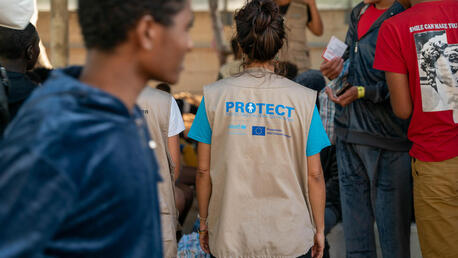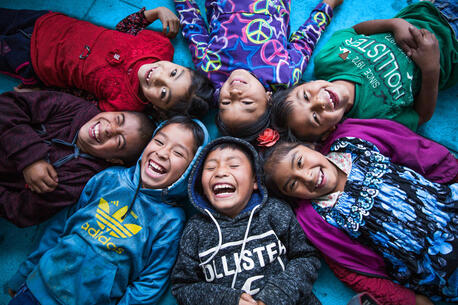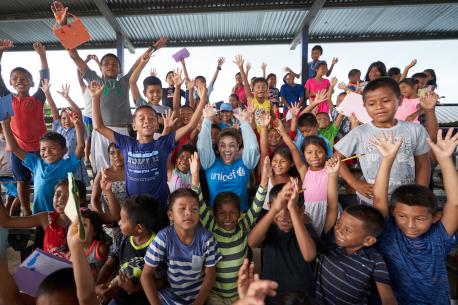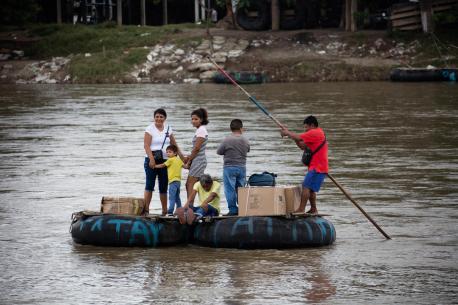
Record Numbers of Child Migrants in Latin America and the Caribbean at Great Risk
A new UNICEF Child Alert signals urgent and growing needs of children migrating across the Latin America and Caribbean region — often without parents or caregivers. More donor support is needed to help UNICEF accelerate efforts to protect the rights of all children on the move.
1 of every 4 migrants in Latin America and the Caribbean is a child
Increasing numbers of migrant and refugee children are moving across Latin America and the Caribbean seeking better opportunities and protection, UNICEF reported today in a new Child Alert, The Changing Face of Migration in Latin America and the Caribbean: A region like no other.
Around the world, children make up 13 percent of the migrant population — but account for 25 percent of people on the move in Latin America and the Caribbean. UNICEF estimates that there are at least 8.7 million children on the move in the LAC region, both child migrants and those who have been forcibly displaced.
The major flows are migrants on the move within and through northern Central America and Mexico, from Haiti and from Venezuela.
The largest group of migrant children are kids below age 11; at three specific border points — Colombia-Panama, Chile-Peru, Mexico-Guatemala — this age group accounts for 69 to 91 percent of all children on the move.
Many are on the run from dangerous and even life-threatening conditions in their countries of origin: violence, political persecution, extreme poverty, the impacts of a natural disaster or extreme weather event. And many are making perilous journeys without their parents, often crossing multiple borders.
Of particular concern are the record numbers of children crossing the Darien Gap heading north: in the first half of 2023, over 40,000 children made the dangerous journey – half of them under age 5.
As UNICEF points out, child migrants face significant barriers in accessing the services they need to stay healthy and safe. Many are missing out on education, proper health care and protection, both while in transit and upon reaching their destinations. And the challenges child migrants face — the suffering and hardships they are likely to encounter while on the move — can have lasting physical and psychosocial consequences.
UNICEF has teams on the ground throughout the region working with partners to reach migrant and refugee children with lifesaving assistance and protection. But more funding is needed — a lot more — to meet program targets given ever increasing needs.
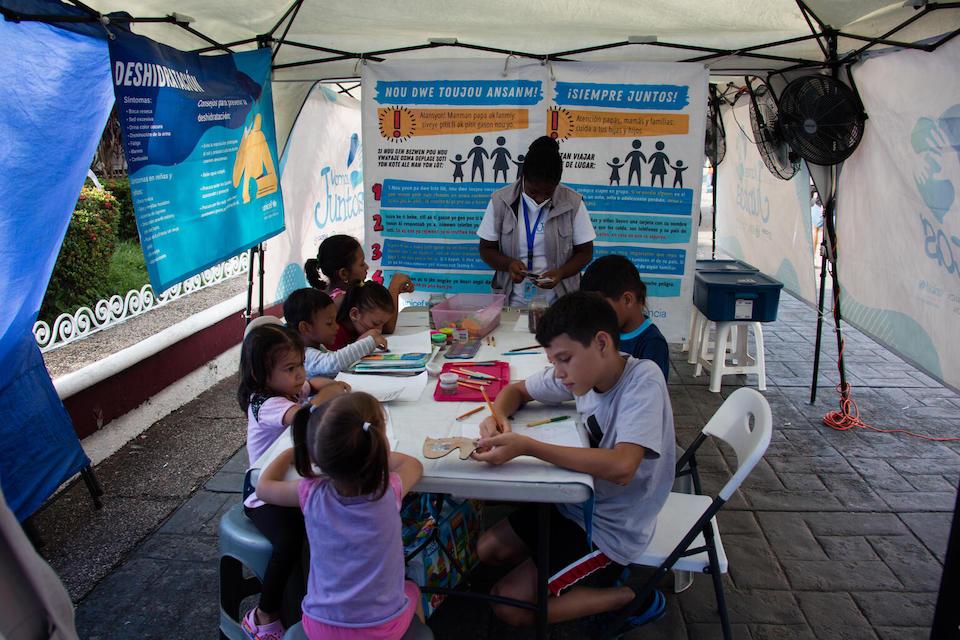
The unique and complex nature of child migration in the Latin America and the Caribbean region
Child migration in the region is complex, as UNICEF details in its new report. Migration flows are multidirectional and interconnected, with many countries acting as places of origin, transit and destination all at once.
"Across the region, millions of children and their families have left their schools, friends and communities as part of three major mixed migration flows and innumerable smaller-scale ones," the report states. "These flows are multidirectional and interconnected, with many countries acting as places of origin, transit and destination all at once.
"And the face of child migration in the region is changing in line with the constantly evolving dynamics that drive the flows themselves," the report continues. "There is more diversity now in the nationalities and backgrounds of child refugees and migrants in LAC than we have seen in decades."
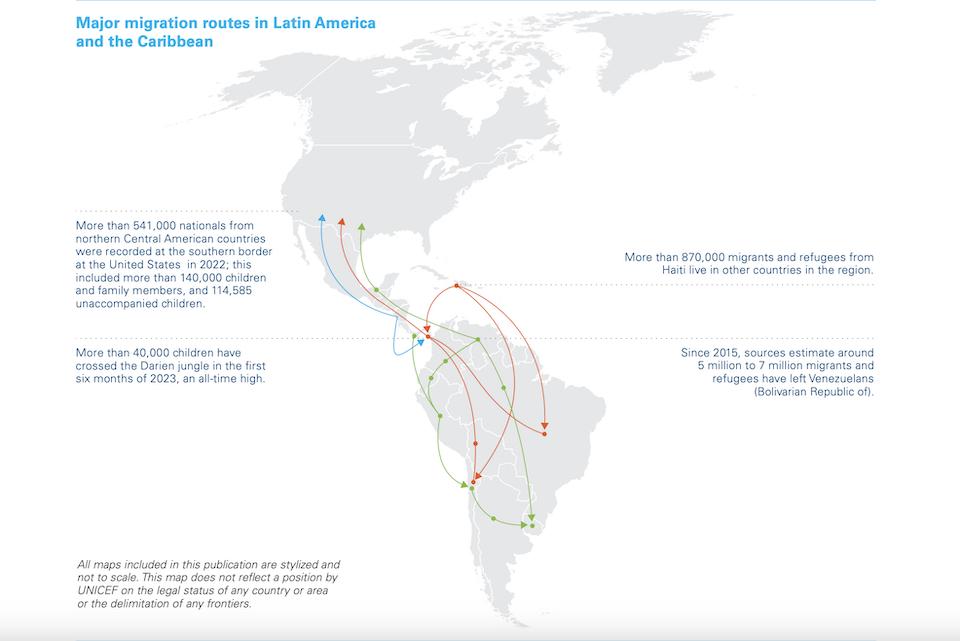
Child migrants face higher risks of violence, exploitation and abuse
Especially worrisome is that children on the move are at higher risk of violence — including sexual violence, trafficking and other forms of exploitation and abuse.
The safety risks are greatest for separated and unaccompanied children and women, who are preyed upon by traffickers, criminals, organized gangs, security forces and others who wish to exploit, hurt or even kill them, especially if they are moving alone or in small groups.
Children on the move are also at higher risk of serious health conditions; often dehydrated and malnourished from their journeys, they are more susceptible to falling ill.
"Diseases, drowning, family separation and violence at the hands of criminal groups are just some of the risks that they faced throughout the journey," UNICEF Regional Director Garry Conille said following a visit to the Darién Gap. "Many of them have lost their belongings, their documents, their hope. It was heartbreaking to hear their stories."
In 2022, at least 92 migrant children died or went missing while moving through Latin America and the Caribbean — more incidents than in any other year since 2014.
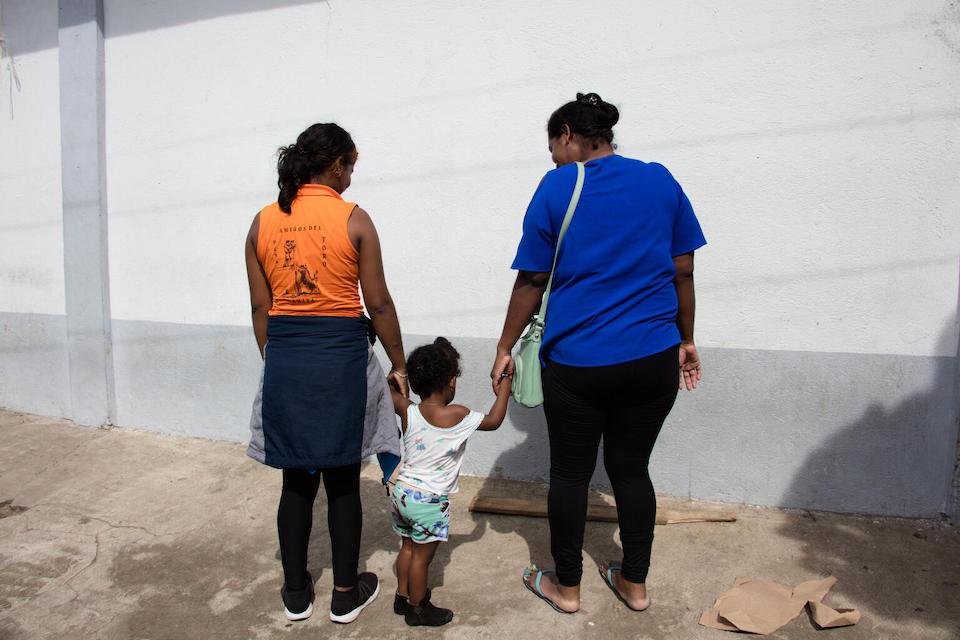
Child migrants are more likely to miss out on education, health care
Many migrant children are missing out on education, proper health care and protection, both while in transit and upon reaching their destination, UNICEF notes.
According to a 2022 assessment, 24 percent of Venezuelan children in Colombia aged 6 to 11 — and nearly 40 percent aged 12 to 17 — did not attend school, for example. And studies have shown similar trends among Haitian migrants living in the Dominican Republic.
Many Haitian migrant families and their descendants live below the poverty line and have limited access to legal identification. This reduces their access to essential services, social benefits and decent housing.
Another issue UNICEF highlights in its report: Children on the move often find it difficult to feel at home in their new communities — especially if it requires learning a new language or adapting to a different culture.
UNICEF points to the wide age range among migrating children while urging governments and humanitarian responders to support an appropriately varied response — one that accounts for the different needs of infants vs. older children vs. teens.
Keeping families together should also be a priority, according to UNICEF.
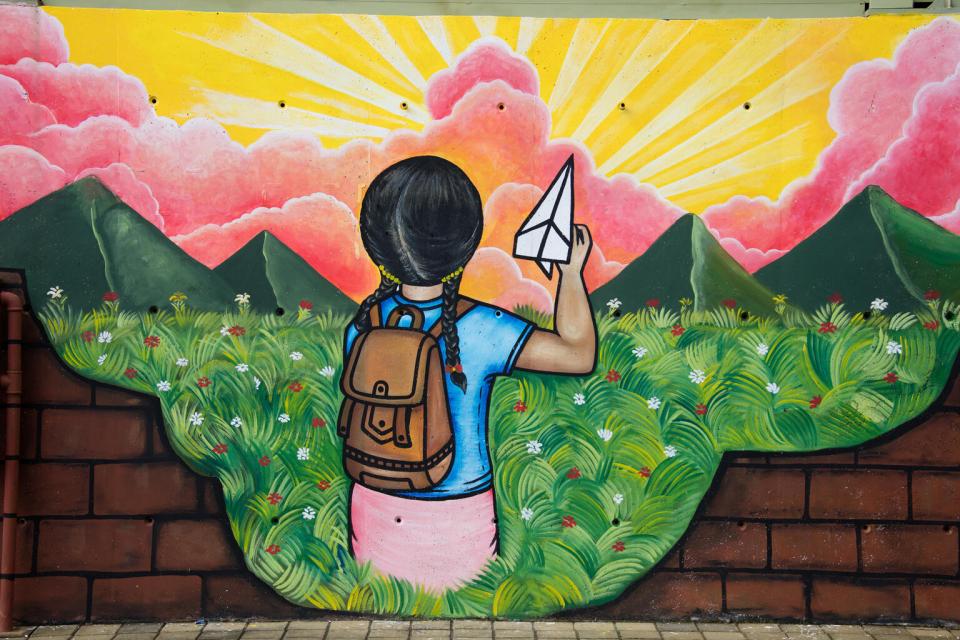
How UNICEF is helping child migrants in Latin America and the Caribbean
UNICEF is on the ground across the region, working alongside governments and partners to deliver safe water and sanitation, nutrition, health care and immunizations, psychosocial support, education support, protection and legal services to migrant, refugee and displaced children.
UNICEF is also providing development support to hosting communities, helping to strengthen education, health and child protection systems in transit and host countries.
In addition to making sure immediate needs are met, UNICEF also provides technical support to help children integrate into local schools, through flexible and adaptable curricula. UNICEF helps raise awareness to fight discrimination against migrant and refugee children, supports initiatives to provide migrant children with legal identification so they can better access essential services, and helps to identify and reunite families who become separated.
In 2022, with donor contributions, UNICEF and partners reached 5.2 million migrant children with a range of services and support.
In 2023 — in 21 countries* across the region — UNICEF is continuing to provide children and families with access to basic services throughout their migration journey, as well as integrated interventions to facilitate their access to education, health and protection services in host communities, to prevent and respond to violence, and create education and livelihood opportunities.
More funding is urgently needed. As of August 2023, UNICEF's humanitarian action plans for the region were facing shortfalls of 74 percent or more.
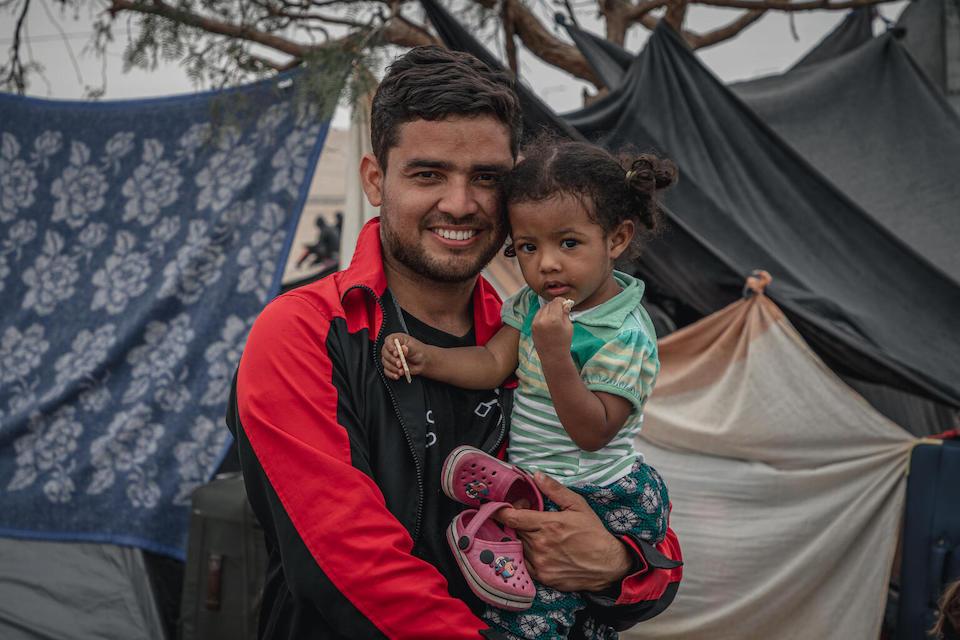
UNICEF's recommendations for action in the region
While continuing its program work across the region, UNICEF continues to urge UN member states to take concerted action to protect the rights, safety and well-being of migrant and refugee children.
Recommendations for action include:
Sustain a coordinated regional approach: continue to mobilize a regional approach to international protection and to address the child-specific root causes of unsafe migration, to build on the interconnected nature of migration movements and policy responses in the region
Provide regular pathways and uphold access to territory: continue to expand safe and regular migration pathways for children and families, including family reunification mechanisms, while upholding the right to territorial asylum
Provide child-sensitive border reception and services: ensure that screening processes in regional or border processing centers are carried out in coordination with service providers so that the needs of children and families are identified and access to critical services, such as child protection services, is not overlooked
Strengthen child protection systems: invest in mechanisms that safeguard children from exploitation and violence, ensuring compliance with adequate procedures to determine their best interests and promoting safe border crossings; prioritize family- and community-based care and non-custodial measures
- Foster integration and participation: actively combat xenophobia and discrimination and ensure families on the move can integrate, access jobs and livelihoods, and participate in all aspects of community life
A sixth recommendation has to do with ensuring that all children on the move have access to the necessary identity, citizenship and legal status documentation throughout their migration journey. Having an identity, UNICEF points out, is necessary to prevent statelessness, allow for safe and regular migration, facilitate access to services and social protection, and protect children from trafficking and other forms of violence.
UNICEF also believes all migrants and refugees should be able to register their vital events (e.g., birth, marriage) in the national civil registration in the country where it occurred.
How UNICEF USA is advocating for the protection of child migrants' rights
UNICEF USA encourages the U.S. Government to ensure all refugees and asylum-seeking children and families, regardless of nationality, are provided regular immigration processing, including access to asylum; to uphold access to safe territory for asylum-seeking children and ensure a child-sensitive reception, care and services system that safeguards children’s rights and well-being.
As the U.S. Government continues efforts to expand legal and safe pathways for migration for children and families in need, UNICEF USA stresses that children should never be returned to situations where their basic safety and well-being are at risk.
Aligned with UNICEF’s own agenda for action for children on the move, UNICEF USA has identified three main areas in which to collaborate with municipal partners in the United States — partners that include Child Friendly Cities Initiative (CFCI) pilot communities, local authorities, civil society and others — in order to improve how newly arrived children are welcomed and integrated into communities: protecting children on the move from violence, abuse and exploitation; keeping them learning and making sure they can access health care and other quality services; and promoting measures that combat xenophobia and discrimination.
Learn more about UNICEF USA's advocacy efforts and how you can take action.
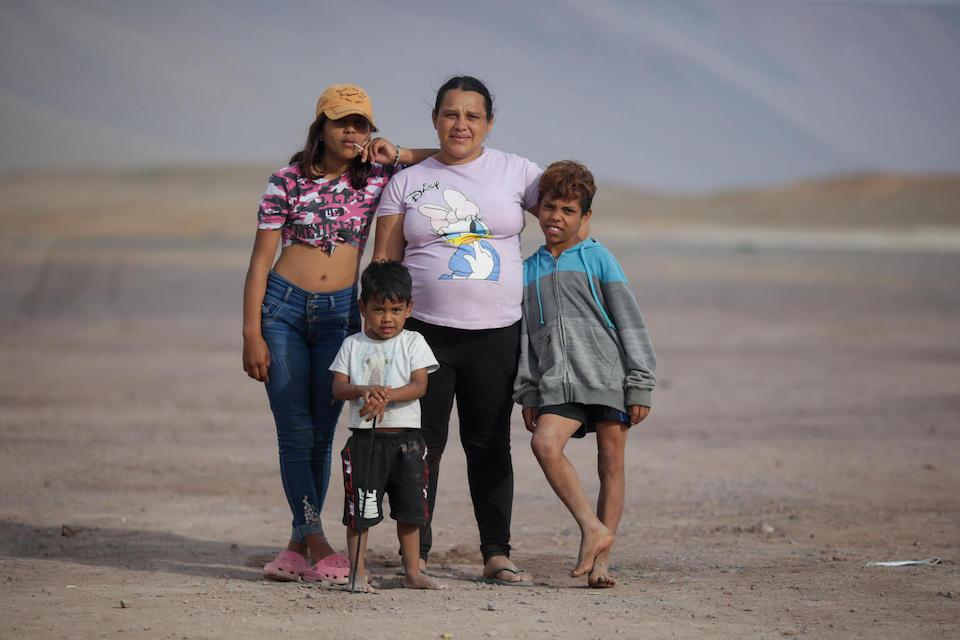
UNICEF continues to advocate for a coordinated regional approach to the migration crisis in Latin America and the Caribbean — one that addresses the child-specific root causes of unsafe migration, responds to humanitarian needs, and fosters integration in host communities, including access to basic services.
In the Child Alert report, UNICEF argues that the solutions exist, and they are attainable, offering several examples of ongoing initiatives in specific countries.
Migrant and refugee children are children first
UNICEF's mission — in the Latin America and Caribbean region and globally — is rooted in the belief that migrant and refugee children are children first, regardless of their migration status.
"Children on the move have the same rights and dreams as children everywhere," Conille says. "No matter their reasons for leaving home, no matter their migratory or legal status, they have the right to protection and safe access to basic services ... We need to give them all the opportunity to grow, learn and thrive."
Learn more about UNICEF's recommendations for action in the region. Read the full report.
*The 21 countries in Latin America and the Caribbean region where UNICEF operates are: Belize, Bolivia, Brazil, Chile, Colombia, Costa Rica, Dominican Republic, Ecuador, El Salvador, Guatemala, Guyana, Haiti, Honduras, Mexico, Nicaragua, Panama, Suriname, Peru, Trinidad and Tobago, Uruguay and Venezuela.
UNICEF recognizes varying complexities within different destination countries for children on the move, including the United States. UNICEF’s U.S.-specific recommendations to strengthen child-sensitive reception, care and services can be found in a separate report published in 2020, entitled, Building Bridges for Every Child: Reception, Care and Services to Support Unaccompanied Children in the United States.
HOW TO HELP
There are many ways to make a difference
War, famine, poverty, natural disasters — threats to the world's children keep coming. But UNICEF won't stop working to keep children healthy and safe.
UNICEF works in over 190 countries and territories — more places than any other children's organization. UNICEF has the world's largest humanitarian warehouse and, when disaster strikes, can get supplies almost anywhere within 72 hours. Constantly innovating, always advocating for a better world for children, UNICEF works to ensure that every child can grow up healthy, educated, protected and respected.
Would you like to help give all children the opportunity to reach their full potential? There are many ways to get involved.



